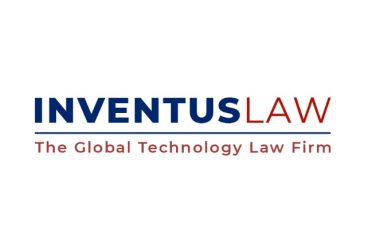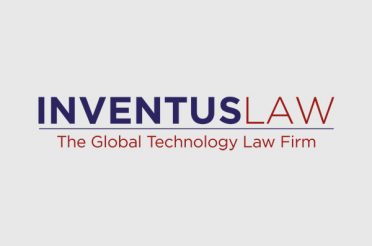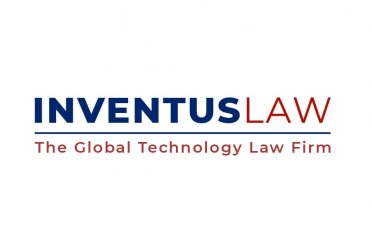SBA LOANS UNDER THE CARES ACT AND EMPLOYEE ASSISTANCE UNDER THE FFCRA [Updated as on 06-04-2020]
I. INTRODUCTION[1]
During the week of March 22, 2020, Congress passed, and the President signed into law, two substantial pieces of legislation to address the economic turmoil brought on by the COVID-19 pandemic.
The Families First Coronavirus Response Act (FFCRA) became law on March 18, 2020 and will become effective on April 1. 2020.
The Coronavirus Aid, Relief, and Economic Safety (CARES) Act became law on March 27, 2020, and effective retroactively from January 27, 2020.
Both of the Acts significantly help small businesses (under 500 employees) to cope with the loss of business and employees, who must take leave and/or work from home as a result of various state requirements, including the State of California, and to care for children whose schools and daycare centers have been closed.
The CARES Act and the Loan Programs under it have generated much more attention than the FFCRA, which will pay companies to extend leaves to employees, who must work at home to care for children and parents, but both laws are very important to small businesses.
This memo summarizes the key aspects of both the CARES Act and the FFCRA as they apply to the small companies, and also includes a brief description about the renters’ protection provisions.
II. SBA CARES ACT DISASTER LOAN ASSISTANCE FOR SMALL COMPANIES
The CARES Act significantly expands unemployment benefits and was passed shortly after 3.3 million Americans applied for unemployment benefits in the previous week, which was the largest unemployment claims since the Big Depression of the 1930s.
Perhaps, the most significant provision for startups is the creation of the Emergency Loan Program and the Payroll Protection Loan Program for small businesses, both of which are available to the small business at the same time, which makes substantial resources to provide small businesses relatively fast access to capital.
The CARES Act made several changes to the Economic Injury Disaster Loan (EIDL) Program under Section 7(b) of the Small Business Act (SBA) as modified by the CARES Act:
A. SBA EIDL ASSISTANCE AND CARES ACT
- Availability. The EIDL assistance is available to “small business concerns” (see below) in a declared disaster area. The President has declared all 50 states, Puerto Rico, Guam and the North Mariana Islands to be disaster areas for purposes of the EIDL Program. This declaration is effective retroactively from January 31, 2020, to cover economic injury, including loss of revenues, resulting from the pandemic disaster. The EIDLs will be processed directly through the SBA, although the SBA may determine to enlist the assistance of lenders for the processing and making of loans. An Economic Injury Disaster Loan assistance declaration issued by the Small Business Administration makes loans available to small businesses and private, non-profit organizations in designated areas of a state or territory to help alleviate economic injury caused by the Coronavirus.
- Cooperation with the States. Additionally, the Small Business Administration’s Office of Disaster Assistance will coordinate with the governor in the impacted state to submit the request for Economic Injury Disaster Loan assistance. Once a declaration is made for designated areas within a state, the information on the application process for EIDL assistance will be made available to all affected communities. Virtually all states, including the State of California and Delaware have issued these Disaster Declaration. The Disaster Declaration for the State of California can be downloaded here and the State of Delaware can be downloaded here.
- Covered Period. Covered Period for EIDL loan is January 31, 2020 through December 31, 2020.
- Eligibility. Eligible borrowers include small businesses with not more than 500 employees, individuals, who operate under a sole proprietorship, and ESOP with not more than 500 employees. A borrower can have more than 500 employees if such borrower qualifies as “small” under the SBA size standards found at https://www.sba.gov/size-standards. It is noteworthy that borrowers are subject to SBA Affiliation rules. Non-profits, tribal business concerns and small agricultural cooperatives are also eligible.
- Loan Requirements. The EIDL loans are available in a maximum amount of $2 million, carry an interest rate of up to 3.75 percent and have a maximum term of 30 years. EIDL loans less than $25,000 do not require a collateral and/or personal guarantee. Loans greater than $25,000 and equal to or less than $200,000 require a collateral (like cash, IP, etc.) but no personal guarantee. However, loans over $200,000 require a collateral and must also be guaranteed by any owner having a 20 percent or greater interest in the applicant. The CARES Act significantly removed the requirement for personal guarantees on loans under $200,000. The CARES Act also removed certain SBA requirements that the borrower not be able to secure credit elsewhere. It also revised the requirement that the borrower have been in business for at least one year provided it was in operation on January 31, 2020.
- Emergency EIDL Advance. Section 1110 of the CARES Act allows small business borrowers to request an expedited disbursement that is to be paid within three days of the request. The Emergency EIDL Advance may not exceed $10,000 and must be used for authorized costs (i.e., COVID-19 related) but is otherwise not repayable if the EIDL loan application is not approved.
- Use of the Proceeds of the Loans. These loan proceeds may be used to pay fixed debts, payroll, accounts payable, mortgage, and other bills that can’t be paid because of the disaster’s impact.
- Maximum Interest rates for EIDLs. The maximum interest rate is 3.75% for small businesses and 2.75% for non-profits.
- Repayment Terms. SBA offers loans with long-term repayments in order to keep payments affordable, up to a maximum of 30 years. Terms are determined on a case-by-case basis, based upon each borrower’s ability to repay.
- The EIDL loan and Emergency EIDL Advance Process. A borrower can apply for EIDL loan application by clicking here: https://covid19relief.sba.gov/#/. Note that the EIDL loan application will provide an option to request for the Emergency EIDL Advance which is capped at $10,000. The following supporting documents may be needed:
- Tax information authorization (IRS Form 4506 T), completed and signed by each applicant, each principal owning 20% or more of the applicant business, each general partner or managing member; and, for any owner who has greater than 50% ownership in an affiliate business;
- Most recent federal income tax returns for the borrower;
- Personal financial statements (SBA Form 413D) completed by each principal owning 20% or more of the borrower’s business, and each general partner or managing member;
- A schedule of liabilities listing all fixed debts (SBA Form 2202 may be used); and
- A fee disclosure (SBA Form 159D).
B. PAYCHECK PROTECTION PROGRAM (SECTION 1102 OF THE CARES ACT)
The CARES Act has authorized $349 billion for the Paycheck Protection Program (“PPL Loan”), the details of which are provided below. The overarching purpose of the CARES Act is to enable companies to continue to pay its payroll during the pandemic period.
- 1Covered Period. The Covered Period for Paycheck Protection Program is February 15, 2020 through June 30, 2020 and the latter being the hard line for loan applications.
- The Process.
- Start. The PPL Loan Program began on April 3, 2020. It is administered through participating banks, but the PPL Loans are guaranteed by the SBA. Many participating banks did not have their procedures in place on April 3, 2020 and are scrambling to do so during the weekend of April 4, 2020.
- Participating Banks. First check with your bank to see if they are participating. As of today, over two hundred banks are participating, many of them small and community banks and credit union. Since the PPL Loan Program is first come, first serve, you should get your loan application in as soon as possible. If your bank is not participating, check with banks in your area, many of which will process the PPL Loan application even if you are not an existing customer.
- Average Monthly Payroll Cost. The initial application for the PPL Loan is pretty simple. You need to provide your average monthly payroll cost for 2019, if you were in existence before the beginning of 2019. If not, you can use the year ending on January 31, 2020, or the two months of 2020 ending on February 29, 2020. First calculate the total annual payroll cost. Then deduct the excess over $100,000 (if any) per employee from the total annual payroll cost. Then divide the total annual payroll cost by 12 to get the average monthly payroll cost.\
- 20% Owners. You must list all 20% Owners on the application and contact information, including his/her/its EIN/TIN/SSN.
- Other Information. You must answer a series of relatively simple questions.
Qualifications. The Paycheck Protection Loan Program is available for the period from February 15, 2020 to June 30, 2020. To qualify under the Paycheck Protection Program, the company must have less than 500 employees,”[2] meet the SBA maximum size for the small business concern calculated by NAICS Code; or must have received financing from the Small Business Investment Corporation.
3. Maximum Interest Rate. The rate of interest will be one (1) percent) for a term of two (2) years. Loans will be made by SBA-approved lenders that have delegated authority to make the loans without approval from the SBA (no SBA Authorization required for each individual loan).
4. Expedition. This should help expedite the application and closing process. In reviewing the application, a lender has to evaluate whether the borrower was in business on February 15, 2020 and had employees and paid salaries and taxes or had independent contractors and filed 1099-MISC for them.
- Allowable Uses of the Loan: Such loan proceeds can be used for payroll costs, employee salaries, commissions, or similar compensations, rent, utilities, costs related to the continuation of group health care benefits during periods of paid sick, medical, or family leave, and insurance premiums; and interest on any other debt obligations that were incurred before the covered period.
- Favorable Provisions. The CARES Act requires all guarantee fees be waived and that loans under this Program be non-recourse to the borrower. The CARES Act specifically provides that each loan under this Program is nonrecourse to the shareholders, members and partners of the borrower. The CARES Act removes the no “credit elsewhere test” for these loans, which was applicable to previous loans from the SBA. The loans will not require collateral. The loans may be prepaid at any time without prepayment penalties. Payments on the loan will be deferred for six to twelve months. Such waivers have essentially loosened the requirements to obtain a loan for small companies.
- Forgiveness. Use of funds from the PPL Loan to pay legitimate expenses (salaries and wages, not to exceed $100,000 per individual) and rents, mortgage, utilities, health and benefit payments, if were in effect on February 15, 2020) in the 8 weeks period from the date of the Loan will be forgiven. To incentivize the borrower to keep employees, the amount forgiven will be reduced proportionally by any reduction in the number of employees retained as compared to the prior year. The proportional reduction in loan forgiveness also applies to reductions in the pay of any employee where the pay reduction exceeds 25 percent for any employee that made less than $100,000 annualized in 2019. A borrower will not be penalized by a reduction in the amount forgiven for termination of an employee made between February 15, 2020 and April 26, 2020, as long as the employee is rehired by June 30, 2020. In regard to salaries, a borrower will not be penalized in the amount forgiven if salary levels are restored for any changes made between February 15, 2020 and April 26, 2020. Any amount outstanding after considering the amount forgiven will be repayable over a term of 2 years. Note that PPL Loan can be forgiven up to 100% of the eligible expenses incurred during the 8-week period but hat not more than 25% of the forgiven amount may be for non-payroll costs.
- Documents required for loan forgiveness: A borrower must apply through its lender for forgiveness on the PPL Loan. Such application must include:
- Documentation verifying the number of employees on payroll and pay rates, including IRS payroll tax filings and State income, payroll and unemployment insurance filings.
- Documentation, including cancelled checks, payment receipts, transcripts of accounts, or other documents verifying payments on covered mortgage obligations, payments on covered lease obligations, and covered utility payments;
- A certification from a representative of the eligible recipient authorized to make such certifications that (i) the documentation presented is true and correct; and (ii) the amount for which forgiveness is requested was used to retain employees, make interest payments on a covered mortgage obligation, make payments on a covered rent obligation, or make covered utility payments; and
- Any other documentation the Administrator determines necessary.
- Maximum Loan Amount: The maximum loan amount would be the lesser of $10 million or a sum of company’s average total monthly “payroll cost”[3] for the previous year[4] multiplied by 2.5. If refinancing an EIDL Loan, then add the outstanding EIDL Loan made between Jan. 31, 2020 – April 3, 2020 to the amount calculated above, less the amount of any “advance” under an EIDL Loan.
- Sole Proprietorship and Self-employed Individuals. Sole proprietorships, independent contractors and self-employed individuals qualify for loans under this Paycheck Protection Program. Additionally, the CARES Act makes certain nonprofit organizations (must be tax-exempt under Section 501(c)(3) of the Internal Revenue Code), qualified veterans’ organizations and certain Tribal business concerns eligible.
- Certifications. To participate in the Paycheck Protection Program, the borrower must certify that (i) current uncertain economic times make the loan request necessary to support ongoing operations; (ii) funds will be used to keep workers employed and make payroll, mortgage payments, lease payments and utility payments; (iii) borrower does not already have an application pending for other payroll assistance under the CARES Act; and (iv) during the period beginning on February 15, 2020 and ending on December 31, 2020, that the eligible borrower has not received amounts under this Program for the same purpose and duplicative of amounts applied for or received under a covered loan. A loan under the Paycheck Protection Program makes the borrower ineligible for the Employee Retention Tax Credit made available under Section 2301 of the CARES Act but such disqualification does not apply to any credits available under the FFCRA (such as the paid sick leave tax credit) or other credits available under the CARES Act.
C. RECAP AND MISCELLANEOUS PROVISIONS FOR SMALL BUSINESSES
- Affiliation Rules. It is highly noteworthy that small businesses are subject to the SBA Affiliation Rules to qualify for both EIDL Loan and the PPP Loan. Two common ways for an independent company (or individual) to be an “affiliate” of a borrower are (i) the borrower owns 50% or more of its voting stock; or (ii) it controls the borrower.
- “Control” means where a shareholder (independent of other shareholders) has the ability to prevent a quorum or otherwise can block/veto certain activities like securing loans, selling an asset, etc.[5]
- Husbands and wives, parents and children, relatives, funds owned/jointly managed, franchises, single contract/dependent companies will be considered one shareholder and affiliates under the SBA affiliation rules.
- Subsidiaries and Parents of the applicant will be considered affiliate sof the applicant.
- Common management companies will be considered affiliates.
- Common Ownership also triggers affiliation.
- Employees of all of the affiliates of a borrower must be added to the borrower’s list of employees for determining the 500-employee limit. See examples below:
-
- If a shareholder (“A”) owns 50% of voting stock of Company. B – it is an affiliate of Company B and if such shareholder is an entity, its employees will be added to the employees of Company. B to determine 500-employee headcount.
-
- If A owns 50% voting stock of other companies, all employees of the other companies, along with that of A (if an entity) will be added to the 500-employee headcount of Company B.
- In the alternative, if a shareholder (individual or an entity) has “control” of Company B, such shareholder is also an affiliate of Company B. If such shareholder is an entity, its employees will be added to the 500-employee count of Company B. Additionally, if such shareholder has control in other companies, those other companies are affiliates of Company B and their employees will be counted.
- SBA Paycheck Protection Program. The CARES Act “temporarily” modifies the Small Business Administration’s 7(a) loan program to allow companies with less than 500 employees, as well as those that are larger than 500, but qualify as a “small business concern” to apply for a loan. For businesses with existing SBA loans, principal and interest would be waived for six months.
- Business Interruption Loan. Businesses with fewer than 500 employees that continue to employ and pay workers through the coronavirus crisis may qualify for small business interruption loan. The government would provide loans to small and midsize businesses to prevent layoffs and to continue paying employees. Individual loans could cover six weeks of payroll, capped at $1,540 per week, per employee.
- Maximum Loan Amount. The maximum amount of the emergency would be the lesser of $10 million or a company’s average total monthly payroll cost for the previous year multiplied by 2.5. If a firm wasn’t in business in early 2019, the cost would be calculated based on payroll from January 1 to February 29, 2020. The loans would be available during an emergency period ending June 30th.
- Verification. Applicants must verify the previous six weeks of payroll and later verify that they have paid employees for eight weeks after receiving the loan.
- PPL Loan and EIDL Loan. If borrower’s EIDL Loan was not used for payroll costs, it does not affect borrower’s eligibility for a PPL Loan. If the EIDL Loan was used for payroll costs, then the PPL Loan must be used to refinance borrower’s EIDL Loan. Proceeds from any advance up to $10,000 on the EIDL Loan will be deducted from the loan forgiveness amount on the PPL Loan.
- PPL Loan and Other SBA Loans. Borrowers may apply for PPL Loan and other SBA financial assistance, including EIDL Loan, 7(a) loans, 504 loans, and microloans, and also receive investment capital from Small Business Investment Corporations (SBICs). However, borrowers cannot use their PPL Loan for the same purpose as their other SBA loan(s). For example, if a borrower uses PPL Loan to cover payroll for the 8-week covered period, such borrower cannot use a different SBA loan product for payroll for those same costs in that period, although borrower could use it for payroll not during that period or for different workers.
D. HOW TO APPLY FOR THE EIDL LOAN AND PPP LOAN
Apply for EIDL Loan
A borrower can apply for EIDL Loan application by clicking here: https://covid19relief.sba.gov/#/.
Apply for PPP Loan
Borrowers can apply through any existing SBA 7(a) lender or through any federally insured depository institution, federally insured credit union, and Farm Credit System institution that is participating. The Department of Treasury will also be in charge of authorizing new lenders, including nonbank lenders, to help meet the needs of small business owners. Other regulated lenders will be available to make these loans once they are approved and enrolled in the program.
Supporting documents include: payroll processor records, payroll tax filings, or Form 1099-MISC, IRS Form 940 for the year ended 12/31/19, and Articles of Incorporation (comparable documents) of the borrower.
Link to the PPL Loan application can be found here: https://www.sba.gov/sites/default/files/2020-04/PPP%20Borrower%20Application%20Form.pdf.
E. PAYROLL TAX DEFERRALS AND REFUNDS FOR ELIGIBLE EMPLOYERS
- Employer payroll taxes (Section 2302 of the CARES Act). The CARES Act has deferred the payment of certain employer payroll taxes like social security tax for 2020. Such taxes will be paid in two equal installments – first installment will be due on December 31, 2021, and the second on December 31, 2022. Employers who have received a loan forgiveness under Sections 1106 and 1109, may not qualify for this deferral benefit.
- Refundable employee retention credit. Section 2301 of the CARES Act provides for a refundable payroll tax credit for 50 percent of “qualified wages” paid by employers to employees during the COVID-19 crisis. Such credit can be availed by the employers whose (1) operations were fully or partially suspended, due to a COVID-19-related shutdown order, or (2) gross receipts declined by more than 50 percent when compared to the same quarter in 2019. The “qualified wages” is calculated on the basis of the number of employees as determined by taking the average number of employees in 2019 and is subject to a $10,000 limit per eligible employee, including health benefits.
- Individual Rebates. The CARES Act also provides for certain rebates for married couples ($2,400) and unmarried individuals ($1,200), as well as an additional $500 per child. The benefit applies to people whose incomes comes from non-taxable means-tested benefit programs like SSI benefits. The IRS will use taxpayers’ 2019 filed tax return to provide the rebate or the 2018 return in the alternative. Thus, taxpayers are not required to fulfill any documentary formalities for the rebate.
- Further Details. For further details, refer to Section 2201 of the CARES Act.
III. PAID SICK LEAVE FOR SMALL COMPANIES UNDER THE FFCRA
A. Paid Leave
- FFCRA Provisions. Among other fiscal packages, the FFCRA does three things: (1) expands the Family and Medical Leave Act (FMLA) temporarily (until the end of December 2020) to cover leave needed for the care of children out of school because of COVID-19 and also makes weeks 3 through 12 of its effective period paid leave; (2) creates 2 weeks of paid sick leave for childcare and other leave related to the coronavirus; and (3) provides for tax credits related to the paid leave provisions created by the act. The FMLA amendments and the new federal sick leave were created in separate and distinct sections. In many respects, they will operate independently, but they were also clearly meant to align with one another, as they have many commonalities.
- DOT, DOL AND IRS Rules. The Department of Treasury (DOT), Internal Revenue Service (IRS), and Department of Labor (DOL) announced plans to provide some relief for small and midsize employers under the FFCRA. In their announcement, they stated that employers may make immediate use of their tax deposits to pay employees taking emergency leave under the Emergency Family and Medical Leave Act (E-FMLA) or as Emergency Paid Sick Leave Act (E-PSLA). The DOL further announced that it would not bring any enforcement actions against employers for any violations within the first 30 days the law is in effect, provided the employer can show it is acting in good faith to comply with the new law.
B. EMPLOYEES ELIGIBLE FOR SICK LEAVE
- Eligible Employees. Employees (full-time or part-time) become eligible for this benefit on hire. An employer might be able to require an employee to telework (paying the employee at the full rate then).
- Healthcare Providers. Healthcare providers and first responders can exclude some or all of their employees.
- Other Employees. Other “essential” employers (such as grocers and gas stations) are not exempt.
- 50 or Less Employees. Employers with fewer than fifty (50) employees who can demonstrate providing this leave would “jeopardize the viability of the business as a going concern” are also exempt from providing this leave. The Department of Labor is expected to issue emergency regulations describing the metrics for jeopardy.
C. COVID – 19 SICK LEAVE TRIGGERS
Paid sick leave is to be available to an employee when such employee cannot even work remotely because:
- the employee is subject to a Federal, State, or local quarantine or isolation order related to COVID–19.
- the employee has been advised by a health care provider to self-quarantine due to concerns related to COVID–19.
- the employee is experiencing symptoms of COVID–19 and seeking a medical diagnosis.
- the employee is caring for an individual who is subject to an order described in (1) above or has been advised described in (2) above.
- the employee is caring for a son or daughter of such employee if the school or place of care of the son or daughter has been closed, or the childcare provider of such son or daughter is unavailable, due to COVID–19 precautions.
- the employee is experiencing any other substantially similar condition specified by the Secretary of Health and Human Services in consultation with the Secretary of the Treasury and the Secretary of Labor.
Note the rules are quite complex. For example, for (3) above, this means paid sick leave can be taken in less than full-day increments. The inclusion of (5) above mirrors the paid childcare leave provision, but available immediately. This allows employees with children to be eligible for both forms of leave and able to take them consecutively.
D. LENGTH OF PAID LEAVE
Paid leave can be taken in increments. After the first use of leave under this law, the employee is expected to give the employer reasonable notice of further use. This paid leave can be used before other leave if the employee desires. An employer cannot require the employer to use vacation, sick or other paid leave benefit before using this benefit in relation to the types of COVID-19 causes above. This leave benefit is capped at 80 hours for full time employees (less for part-time employees).
E. AMOUNT OF PAID LEAVE
The amount of paid leave for a full-time employee is based on 100% of their regular rate of pay multiplied by the number of hours regularly scheduled to work. For employees with irregular schedules the law provides a formula based on prior history or expectation at time of employment. The daily rate is capped at $511 and the total amount is capped at $5,110. However, the rate is capped at $200/day and $2,000 total, if the leave is taken due to (4)-(6) above.
F. NOTICE REQUIREMENTS
From March 25, 2020, employers are required to post a notice of these employee benefits under the FFCRA alongside the other notices that employers are required to post. The Department of Labor has issued a model notice (which can be found here), which the covered employers under the FFCRA must publish, along with the frequently asked questions regarding the notice requirements which can be found here.
G. DURATION AND FEDERAL HELP
This leave is capped at 2 weeks total and only applies to qualifying leave during the period to and including December 31, 2020. The law has a reinstatement provision for returning leave-takers. Amounts paid as leave can be applied as a credit against federal tax payments, with any excess credit refunded as overpayment of tax.
IV. RENTER PROTECTION PROVISIONS
A. RENTER PROTECTIONS
Lastly, the CARES Act provides for the following protections for the existing renters[6]:
- Protection During Forbearance Period (Section 4023). During the forbearance period (as defined in the CARES Act), if a “multifamily borrower” with a federally backed multifamily mortgage loan is granted forbearance of residential mortgage loan payments due to the hardships faced pursuant to COVID-19 emergency, such borrower may not:
-
- initiate a legal action to recover possession of the dwelling unit located on the “applicable property”[7] from the tenant for nonpayment of rent or other fees or charges; or
- charge fees, penalties, or other charges to the tenant related to such nonpayment of rent.
- Notice to Vacate. Additionally, such borrower may not issue a notice to vacate until the expiration of the 120-day period and may not require the tenant to vacate until the expiration of 30 days from the date of serving the notice to vacate. In simple terms, a lessor may not require a tenant to vacate the covered dwelling for a period of 150 days from the date of enactment of the CARES Act. For the defined terms refer to the CARES Act here.
B. Temporary Ban on Eviction Filings
- Legal Actions. Even if forbearance is not sought (as discussed below), for a period of 120-days from the date of enactment of the CARES Act, a landlord of a “covered dwelling”[8] with a federally backed mortgage loan may not (i) initiate a legal action to recover possession of the covered dwelling from the tenant for nonpayment of rent or other fees or charges; or charge fees, penalties, or (ii) other charges to the tenant related to such nonpayment of rent.
- Notice of Eviction. Additionally, a lessor of a covered dwelling may not issue a notice to vacate until the expiration of the 120-day period and may not require the tenant to vacate until the expiration of 30 days from the date of serving the notice to vacate. It is important to understand the meaning of the term “covered dwelling” to take benefit under this provision. Refer to CARES Act Section 4024 which can be found here.
Disclaimers:
This Memo is being provided for information purposes only and is drafted entirely on the bases of public resources. Information contained on or made available herein is not intended to and does not constitute legal advice, recommendations, mediation or counseling under any circumstance. This information and your use thereof do not create an attorney-client relationship. You should not act or rely on any information provided herein without seeking the advice of a competent attorney licensed to practice in your jurisdiction for your particular business. The rules and regulations are still being interpreted and may affect the requirements, approvals, qualifications, and disbursement for the Programs described herein. The SBA has up to 30 days following the enactment of the CARES Act to issue regulations implementing and providing guidance under certain provisions of the CARES Act. The Treasury Department and Internal Revenue Service are required to issue regulations implementing and providing guidance under certain provisions of the CARES Act.
[1] If you have any questions about this Memo or about the FFCRA or CARES, please email Christopher L. Rasmussen, Managing Partner Commercial, Trademark and Privacy at chris@inventuslaw.com or Anil Advani, Managing Partner at anil@inventuslaw.com. Also, if you are interested in engaging Inventus Law to help with SBA Loans’ process, please send an email to sbaloans@inventuslaw.com.
[2]You have to apply the SBA affiliation rules and add the headcount of all “affiliated” companies, including the head count of any 50% owners and “control” owners to yours to determine if you meet the under 500 employee count.
[3] Payroll Costs include:
- Compensation (salary, wage, commission, or similar compensation, payment of cash
tip or equivalent);
- Payment for vacation, parental, family, medical, or sick leave;
- Allowance for dismissal or separation;
- Payment required for the provisions of group health care benefits, including
insurance premiums;
- Payment of any retirement benefit; and
- Payment of State or local tax assessed on the compensation of employees.
Payroll Costs does not include:
- Employee/owner compensation over $100,000;
- Federal employment taxes imposed or withheld between February 15, 2020 and June 30, 2020, including the employee’s and employer’s share of FICA (Federal Insurance Contributions Act) and Railroad Retirement Act taxes, and income taxes required to be withheld from employees;
- Compensation of employees whose principal place of residence is outside of the U.S.;
- Qualified sick and family leave for which a credit is allowed under sections 7001; and 7003 of the Families First Coronavirus Response Act.
[4] If the applicant was not in business for all of 2019, you can use the 12-month period ending on January 31, 2020, or the two-month period between January 1, 2020, and February 29, 2020.
[5] An applicant’s Financing Documents (like Stock Purchase Agreements and Investor Rights Agreements) may require the applicant to obtain consent of the major investors/shareholders before applying for EIDL Loan and/or PPL Loan.
[6] Covered period for renters’ protections is sooner of December 31, 2020 or the termination of the COVID-19.
[7] An “applicable property” with respect to a Federally backed multifamily mortgage loan, means the residential multifamily property against which the mortgage loan is secured by a lien.
[8] A Covered Dwelling means a dwelling that is occupied by a tenant—
(i) pursuant to a residential lease; or
(ii) without a lease or with a lease terminable under State law; and
(B) is on or in a “covered property” (as defined under the CARES Act). Please refer to the CARES ACT here to understand the meaning of the terms “covered dwelling”; “dwelling”; “covered property”; “federally backed mortgage loan”; and “federally backed multifamily mortgage loan.”






